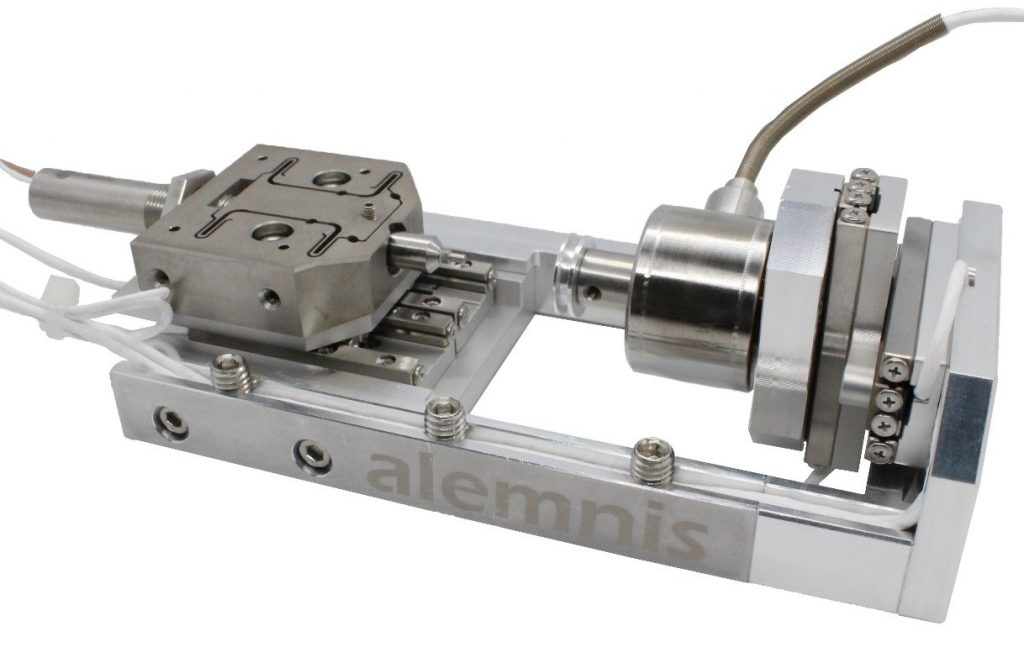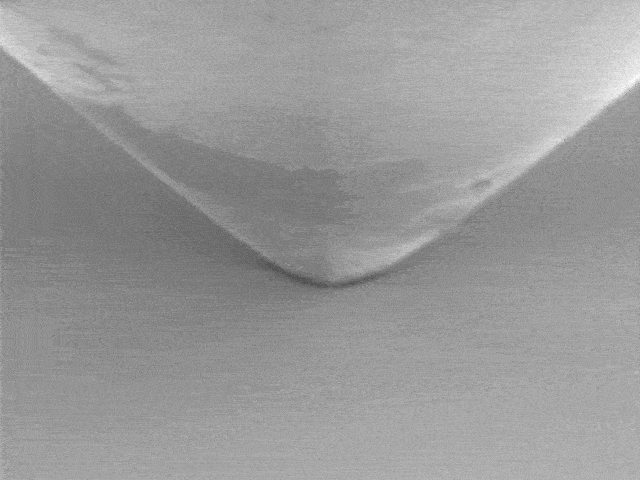
How an Alemnis Standard Assembly Enhances Tribology Testing
Tribology stands at the intersection of science and engineering. It covers the intricate study of friction, wear, and lubrication, profoundly influencing the performance and longevity of mechanical components. Laboratories dedicated to tribology testing delve deep, extracting pivotal data on friction, lubrication, wear, and surface interactions, thereby shedding light on the failure mechanisms of these components. Given the empirical nature of tribology research, influenced by a myriad of parameters, it’s no surprise that comprehensive testing methods, from field tests to model tests, are employed. As we strive to optimize system performance and reduce maintenance costs, understanding these tribological characteristics becomes paramount.
Read more: How an Alemnis Standard Assembly Enhances Tribology TestingEnter the Alemnis Standard Assembly (ASA) – a groundbreaking tool set to redefine the paradigms of tribology testing. Dive in to discover how the ASA is revolutionizing this critical domain.
Versatility in Application
The ASA’s design allows for adaptability in various testing configurations. Whether it’s scratch testing, pin-on-disk testing, or investigating the friction force between two dissimilar materials, the ASA can be tailored to suit the specific requirements of the application. Such versatility ensures that researchers and technicians can optimize the device for their unique testing needs, enhancing the depth and breadth of their investigations.
Automated Precision and Ultra-High Strain Rates
Automation is at the heart of the ASA, making it a fully automated test platform that zeroes in on the mechanical properties of highly localized areas. This precision is further augmented by the ASA’s ability to achieve ultra-high strain rates up to 10,000 s-1. Covering a staggering 8 orders of magnitude, this feature allows for a comprehensive understanding of materials under various dynamic conditions.
Deformation Mechanisms Unveiled
The ASA’s prowess doesn’t end with mere testing. It also delves into the deformation mechanisms of materials. By integrating micro- and nano CT solutions, the ASA offers a unique perspective into how materials deform. Such insights are invaluable, especially when studying materials like polymers coatings, which have complex deformation patterns. Moreover, the acoustic emission data gathered during testing can shed light on the intricate processes occurring within the material.
The Future of Tribology Testing with ASA
In the ever-evolving field of tribology testing, the Alemnis Standard Assembly stands out as a beacon of innovation. Its ability to test fragile materials without damage, its adaptability to various testing methods, and its insights into deformation mechanisms make it an indispensable tool for researchers and technicians alike.
At Alemnis, we are proud to be at the forefront of this revolution. We invite you to explore the myriad possibilities the ASA offers and join us in shaping the future of tribology testing.

How to Perform Scratch Resistance Tests
Scratch resistance tests are an integral part of quality control processes, playing a vital role in assessing the ability of coatings and materials to withstand everyday wear and abrasion. By subjecting these materials to controlled scratching using various test methods, these tests provide valuable insights into their resistance to scratches and the impact of external forces. In this blog post, we will delve into the different methods and steps involved in performing scratch resistance tests, ensuring accurate and reliable results.
What is a Scratch Test?
Scratch resistance tests involve subjecting a coating or material to controlled scratching using different test methods. The primary reason is to evaluate the material’s resistance to scratches and the effects of external forces, and these tests provide valuable insights into a material’s mechanical properties, such as adhesion, hardness, and wear resistance. Moreover, they help identify potential weaknesses and enable the development of more resilient coatings.
How is a Scratch Test Performed?
A few simple steps must be followed for scratch testing to be effective. Firstly, the sample surfaces must be visually inspected to ensure it is clean and free from contaminants, as any impurities or damages can impact the test results. Additionally, the sample should be representative of the material or coating under evaluation.
Equipment Needed
Once the sample is prepared, select the appropriate scratch tester based on the desired test method and the material to be tested. Then, the tester needs to be set up correctly. This involves installing the chosen indenter on the testing equipment and calibrating it. Proper calibration ensures accurate and reliable measurements during the test.
Scratch Test
The actual scratch test is performed by applying a constant force or progressively increasing the force on the indenter as it moves across the sample surface at a constant speed. This process is conducted until failure events happen, such as scratch tracks, which can be further analyzed to determine the material’s resistance to wear and abrasion.
To accurately assess the scratch resistance, experts must compare the results with reference measurements. Scratch testing is a comparative procedure that relies on benchmark data. By comparing the obtained results with those of similar materials or coatings, the relative scratch resistance of the sample can be determined.
Scratch Tests Parameters
Researchers can monitor different scratch parameters during the test, such as applied load, scratch length, and scratch speed, to further understand the material’s scratch resistance. This data helps determine the critical failure points and the material’s ability to withstand external forces.
Analyzing the Results
After the scratch test, the results need to be carefully examined. Using a high-resolution or scanning electron microscope, the scratch is observed to determine the force at which the first cracks formed or when the coating chipped off. Different damage patterns, such as fishbone-like cracks, moon-shaped damage, or large-area chipping, can provide valuable insights into the material’s behavior under stress.
In addition to the primary analysis, it may be necessary to evaluate additional parameters depending on the scratch tester being used. Some instruments can measure tangential force and acoustic emissions, and these parameters provide additional information about the material’s performance under stress, offering a more comprehensive understanding of its behavior.
Additional Considerations
It is important to note that various factors, including coating thickness, substrate mechanical properties, and test conditions, can influence scratch resistance tests. By following these steps and guidelines, scratch resistance tests can provide valuable insights into the durability and performance of coatings and materials. These tests enable manufacturers to make informed decisions, improve product quality, and develop more resilient coatings that meet the demands of real-world applications.
Scratch Resistance Tests with Alemnis
Alemnis provides leading micro-and nanomechanical property measurement instruments that support scientists in breakthrough academic research in materials science.
One of the key solutions we offer is the Alemnis Standard Assembly (ASA), a modular indentation platform for use in-situ, ex situ, in synchrotron, and with micro CT. The ASA can be used with any scanning electron microscope to test for creep, fracture toughness, stress relaxation, and scratch testing to support your advanced mechanical testing requirements.
The ASA is most commonly used for scratch testing inside a scanning electron microscope, as it allows for real-time observation of the scratch and a deeper understanding of scratch deformation phenomena. The ASA can be used to perform scratch testing on coated sheets, paper, and hard coatings.
Contact Alemnis today to learn more about scratch resistance tests.

What are the Different Types of Tensile Gripper Systems?
From the intricate micro gripper to the robust hydraulic grips, tensile gripper systems are paramount to testing a material’s strength. Each type, with its inherent advantages and drawbacks, offers specific capabilities for testing various materials. In this article, we delve into the different types of tensile gripper systems and what makes each unique.
The Art and Science of Gripper Systems
Understanding the role of tensile grips in material testing requires an appreciation for the science behind the process. Microtensile testing is an approach to evaluating the strength of a material under tension. It differs from macroscale testing primarily in the volume of sample material required. A macro test for tensile strength will screen key mechanical properties (yield stress, elastic modulus, etc.) of bulk materials, whereas a microtensile test requires specially fabricated tensile samples with sub-millimetre geometries. Naturally, conventional gripper systems like manual vises, pneumatic grips, or hydraulic grips aren’t compatible with such tiny specimens.
Fabricating reproducible tensile samples at such small scales is an ongoing challenge – as is the issue of how to grip those samples during tensile testing. Microscale gripper systems have emerged as the ideal solution for grasping and manipulating microscale specimens in a range of fields. They can be purpose-built for specific applications, such as high-temperature tensile testing, where thermally-resistant diamond blanks can be cut to size and shape using focused ion beam (FIB) milling. Other applications are routine enough that grippers with a suitable gauge diameter range may be fit for purpose.
Gripping the sample solves part of the issue, but manipulating the sample to accommodate test conditions requires some form of compatible alignment system. Piezo-driven x- and y axes are typically used to position the samples below the grippers. Ideally, the gripper system will be combined with a precise rotation stage used to orient the sample.. A piezo actuator offers displacement from 20 – 100 µm in tensile direction.
Alemnis Gripper Kit: Precision and Versatility
The Alemnis gripper kit is an innovative solution for tensile testing, allowing for meticulous tensile tests on mushroom-shaped pillars. The kit, equipped with an adapter to fit the gripper on the indenter and five standard grippers, is primed for precise application. Its silicon gripper, just 200 µm thick, is designed to grip samples with a gauge diameter of 1 – 15 µm and a mushroom diameter of up to 36 µm. Thanks to its meticulous design, it can accommodate misalignments up to 1° and 0.5 µm, keeping stress deviation within the sample below 10%.
Harnessing the Power of Customization
Flexibility defines the future of tensile gripper systems. As a testament to this, we offer additional grippers as separate items and field requests for customized grippers. This forward-thinking approach underscores the importance of tailoring gripper systems to meet specific needs, advancing the field of material testing.
Ready to Upgrade Your Testing Capabilities?
With a commitment to precision, versatility, and customization, we are poised to provide you with a solution that fits your specific needs. Choose from our range of standard or customized grippers and bring your material testing to the next level. Contact us today to learn more about how our gripper systems can revolutionize your testing process.


